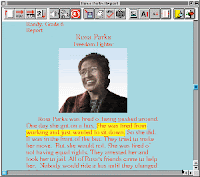Welcome to Las Vegas'
Assistive Technology Resources
This blog was created for educators and families in the Las Vegas Valley to come and learn about various assistive technology resources. Our team has organized our sources into the following categories:
- Low-Tech Devices
- High-Tech Devices
- Assistive Technology Organizations
- Websites for Families & Teachers
- Assistive Technology Assessments










